
Loro Ciuffenna It is a small village located between the Arno and the hills before the Pratomagno mountain, surrounded by the Balze, curious natural formations of clay and sand high up to one hundred meters.
It is a medieval village of timeless charm, with stone houses, cobbled streets and winding alleys, a vcchio bridge leading to the Clock port, from where you enter the most attractive part of the town.
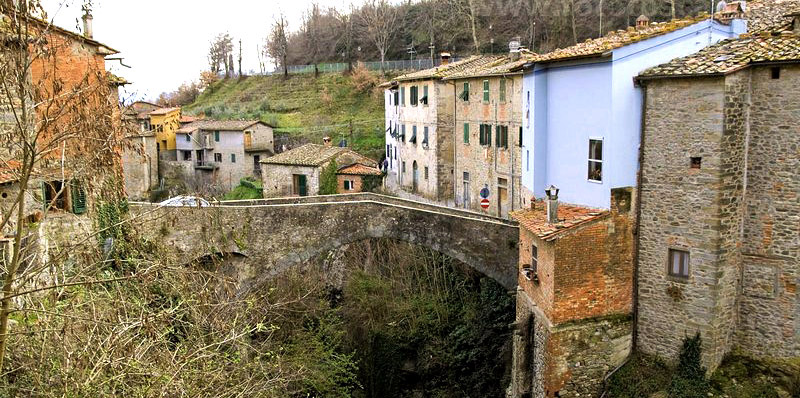

The medieval village of Loro Ciuffenna, with its stone houses built overhanging the creek gorges and winding streets that climb to the picturesque old town. Included in the ancient Castle of Loro most beautiful villages in Italy, there are records from 1065 and its medieval origins still speak to us above the bridge (with its arched high over the Ciuffenna) together with the faces of the Madonnas inhabiting the many churches, churches and abbeys spread over the entire municipality.
absolutely we should visit the Church of Santa Maria Assunta and the other churches of Romanesque origin, like the Church of Santa Maria in Faeto and San Biagio to Borro.
Do
not forget, then to admire the great beauty of the area: the parish
church of San Pietro in Gropina, one of the most beautiful in Tuscany,
which includes the ancient Christian church (V-VI century) and the
Lombard building (VIII-IX century ), as attested by some tombs found with locking plates still carved with the typical cross.
The
church was built around the year 1000 and incorporates the ancient
Christian church dating back to the V-VI century and the Lombard
facility eighth-ninth century, as witnessed by some tombs found on the
spot, with the closing slabs carved with yet the typical cross. Lombard
period is also beautiful pulpit, that the Romanesque workers evidently
decided to re-use, supported in front by two knotted columns that
represent the Trinity and decorated with bas-reliefs, depicting a series
of truly bizarre subjects: anthropomorphic and zoomorphic figures,
branches oak, apostles, snakes and forked sirens. Not
only the decoration that characterizes the pulpit, but the whole
iconography of the capitals and a pulpit in particular, is a real
"sacred encyclopedia" of clear didactic intent.


Firenze with its museums, palaces and churches, it houses some of the most important artistic treasures of the world. Between d 'art sites and best-known cult of the city there are senz' more Cathedral of Santa Maria del Fiore, the Baptistery, the Uffizi Gallery, the Bargello and the Galleria dell 'Accademia. The churches of Santa Maria Novella and Santa Croce are then real d 'art galleries, as well as the Laurentian Library is an' exceptional expression of Michelangelo's architectural genius. We advise you to reserve a bit 'of time to also visit the important and diverse collections held at Palazzo Pitti.
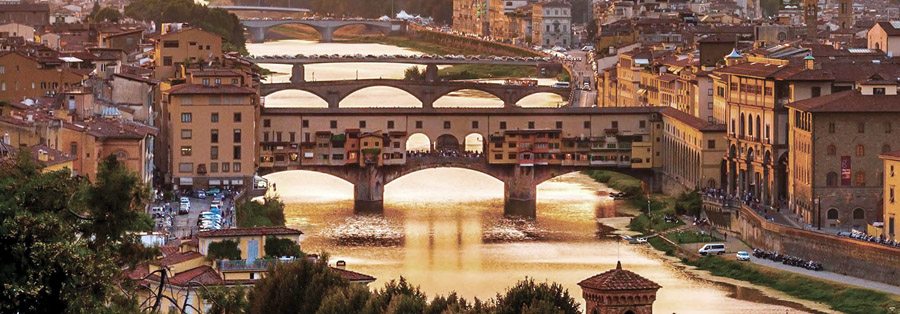
When you tire of seeing museums and art galleries, go to 'open and you will discover that in Florence it's nice just to walk the beautiful streets of the historic center. Walk until you reach the 'Arno, dwell on the romantic Ponte Vecchio and continue until the' Oltrarno, the most "new" in Florence. Spend a day at the Boboli Gardens or climb over the hill behind Piazzale Michelangelo and go to the church of San Miniato al Monte to enjoy a 'amazing view of Florence.
Arezzo It is a beautiful city in Tuscany. Among the region stands proud richest on a hill at the intersection with four valleys. Situated along the Via Cassia has always played an important and prominent role in the history of Tuscany. Many monuments, churches and museums to visit in Arezzo. They want to be some hints and tips on what to see in this beautiful city.
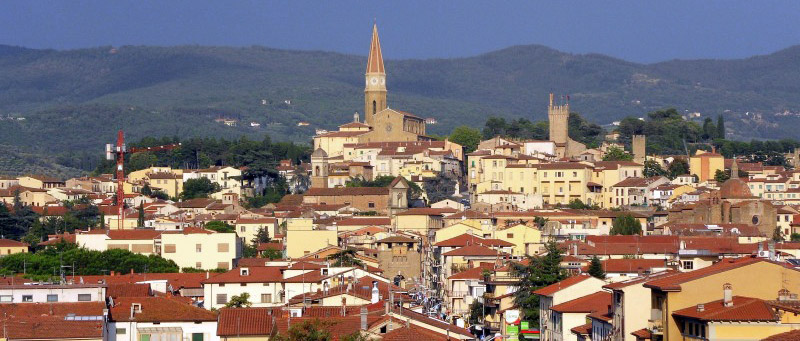
The main attraction of the town is the Basilica di San Francesco, located in the city center. Inside
the Basilica there is the famous Bacci Chapel that preserves the
wonderful cycle of frescoes of the Legend of the True Cross, a
masterpiece of Renaissance painting by Piero della Francesca. Continuing
along Corso Italy you arrive at the church of Santa Maria,
characterized by an interesting Romanesque facade with colonnade. It houses an altarpiece by Pietro Lorenzetti in 1320, Madonna and Saints and a wooden cross of the XIII century Margarito. The old facade you can admire the stunning medieval cycle depicting the twelve months.
Then
you arrive in Piazza Grande, flanked on one side by the Loggia of
Vasari and the Palace of the Lay Fraternity with Our Lady of Mercy by
Bernardo Rossellino in the front bezel. The square is famous for being the film set of "Life is Beautiful" by Roberto Benigni.

In the upper part of the city stands the majestic Cathedral of Arezzo, entitled to San Donato. Built on an early Christian church, the cathedral is famous for its beautiful stained glass windows. The seven windows, masterpiece of glassmaking, were carried out in the '500 by the French master Guillaume de Marcillat. Inside there is also a small fresco by Piero della Francesca representing Magdalene and some terraccotte by Andrea della Robbia. Also worth visiting is the Museo dell'Opera del Duomo, which houses three wooden crucifixes of the XII-XIII century, a Annuncianzione Rossellino and some paintings by Vasari.
Siena, located in the heart of Tuscany and surrounded by hills, it is one of the most beautiful medieval cities d 'Italy.
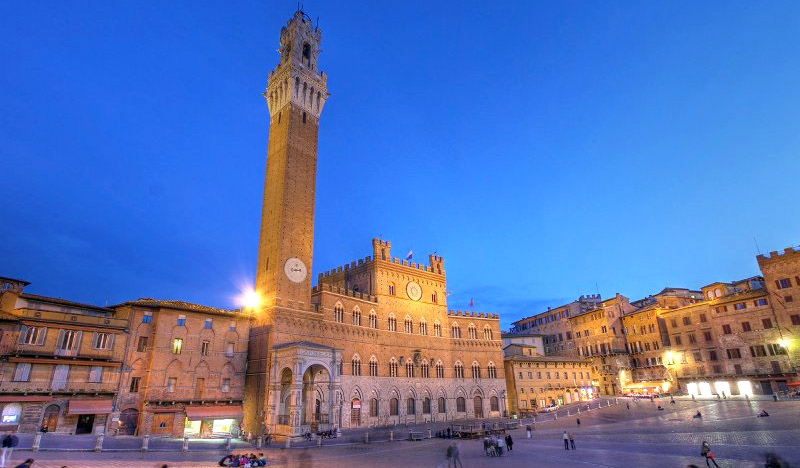
Hub of the city is the famous Piazza del Campo, the shell-shaped, where the famous Palio is held, one of the most important events for all Siena. The Palio di Siena is a 'passionate horse race that takes place every year, in July and August and its origins seem to date back to the seventeenth century addiruttura.
The court is dominated by the red Public Palace and its tower, called Torre del Mangia. The Public Palace, as well as the Cathedral of Siena, was built during the government of the Nine, which was the greatest economic and cultural splendor of Siena. The building still houses the offices of the Municipality, like the Palazzo Vecchio in Florence. The inner courtyard of the Palace leads to the Municipal Museum and the Torre del Mangia, on top of which, climbed the 500 steps, you can enjoy a splendid view of the city.
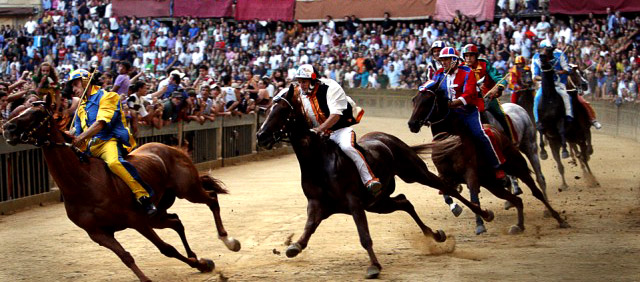
In the Museum they are preserved some of the finest paintings of the Sienese school. The Consistory Hall offers one of the finest works of Domenico Beccafumi, who frescoed ceilings depicting the cycle of public virtue. In the Hall of the Mappamonto and in the Hall of Peace (or nine) room then there are real masterpieces: the great Majesty and the equestrian portrait of Guidoriccio da Fogliano at the siege of Montemassi by Simone Martini and the Allegories of Good and Bad Government Ambrogio Lorenzetti, considered one of the major painting cycles of the Middle Ages.






